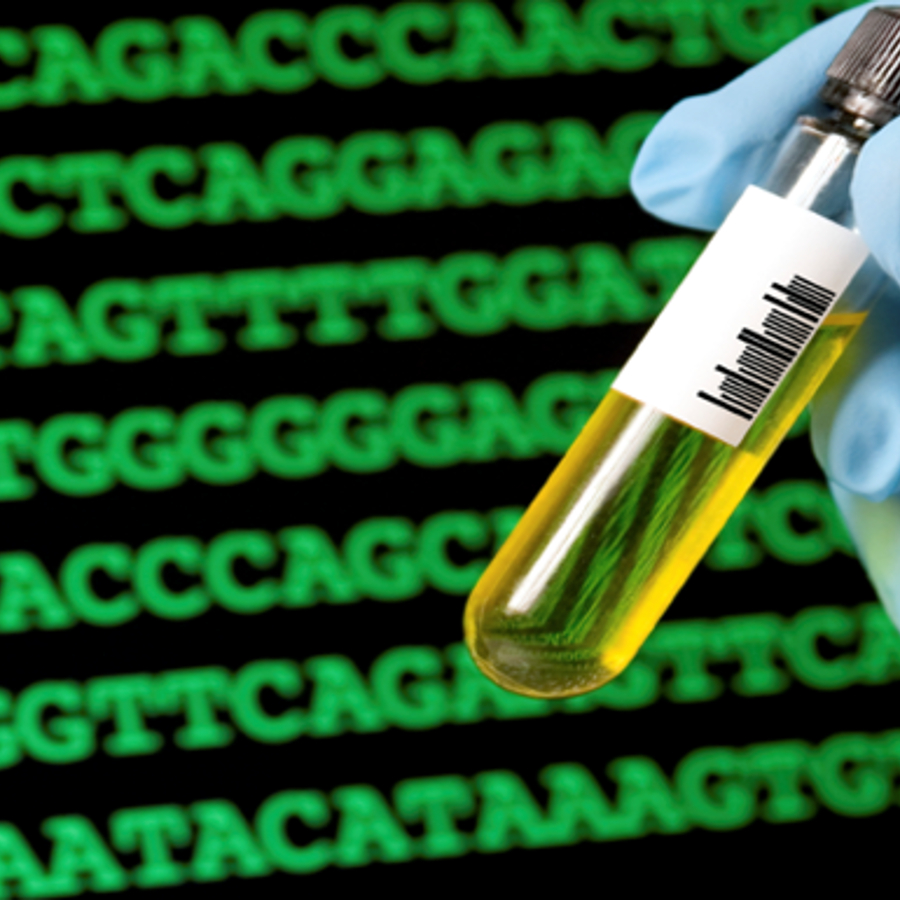
I uploaded my ancestry data to a site that makes health predictions. How concerned should I be?
September 28, 2017

- Related Topics:
- Consumer genetic testing,
- Ancestry tests,
- Cancer
A curious adult from Australia asks:
"I bought an Ancestry DNA test and downloaded the raw data and put it into a database. It said that at rs1393350 I have A, A, and said that this was rare (0.63% of the population) and I had an increased risk of melanoma. It showed me a chart that put me quite a bit into the danger zone, and now I am really scared!"
This does sound scary but if you use sunscreen and try to stay out of the sun you should be fine. This particular DNA difference (or SNP) is linked to lighter eye, hair, and skin color. So what this test basically told you was that you have a DNA change that leads to lighter skin color.
And having lighter skin color, of course, increases your risk for skin cancer which includes melanoma. So that is where your melanoma risk comes from.
To give some idea of the risk, it isn’t nearly as bad as the DNA difference that leads to red hair. So while you are at a higher risk than someone with darker skin, the risk isn’t as scary as whichever database you used might be presenting it as.
In terms of the rareness of the DNA difference, keep in mind that just because something is rare, that does not mean it is bad.
And besides, this bit of DNA isn’t as rare as the database you used would suggest. Or it is even rarer depending on the population you look at.
The 0.63% number is right for the worldwide population. That is the percentage of everyone with A, A at rs1393350. (Well, that number is extrapolated from the people who have been tested. And you can find all the current frequency info here.)
But the number of AA people is much higher in Europeans. Around 6% or so of Europeans have two A’s.
And the numbers are much lower in Africans. There only around 0.006% of people have it (if I am doing my math correctly).

To give some context, let’s look at one of the more common red hair SNPs, rs1805007. People with two A’s at this site tend to have red hair and be at a higher risk for melanoma. Having two A’s is much more common in Europeans and much less common in Africans.
What this means is that this red hair/fair skin SNP is more common than your SNP and it puts a person at a higher risk for melanoma than does your SNP. Puts things into a bit of perspective…
So you are at an increased risk for melanoma but it isn’t that big a risk and it is mostly due to lighter skin. And while it is pretty rare worldwide, it is much more common in Europeans.
Raw Data Sometimes a Raw Deal
Your question shows why raw, unfiltered data about your DNA isn’t necessarily all that useful. It takes a deeper understanding to tell what your information might actually mean.
Your DNA does put you at a higher risk for melanoma but you knew that without a DNA test. Your risk comes from your lighter pigmentation (lighter skin most likely).
This isn’t the only problem that can come out of trying to get medical information from your ancestry data.
Sometimes sites will present data that just talks about increased risk. For example it will say something like, “Your risk for getting disease X is 10 times higher because of your DNA.” Scary!
Except that it isn’t always that scary. Imagine that people in general have a 0.01% or 1 in 10,000 chance of getting the disease. Your DNA puts your risk at 0.1% or 1 in 1000. Yes it is 10 times higher but it is still a miniscule risk.
Another thing to keep in mind is that these risks are not always a sure thing. Plenty of people with the same DNA won’t get the disease and plenty of people without it will. Your DNA just makes it more or less likely.
This becomes clear in your case. Imagine someone who has a G, G at rs1393350. They are at a genetically lower risk for getting melanoma compared to your A, A at the same SNP.
But if you wear sunscreen and he doesn’t, you may be at a lower risk. What we do can mean more than what our DNA says.

And to complicate things more, none of this DNA acts all by itself. Our genes all work together to make us who we are and determine our health risks.
So you may have this SNP that slightly increases your risk but you may have a few more that decrease your risk even more. When you add up all the risks, you may actually be at a lower risk!
All of this points to why having some sort of filter between your DNA and the interpretation can be so helpful. Companies like 23andMe are not perfect but they do at least help explain where your higher risk might be coming from. And what your risk actually might be (1 in 1000 instead of 10 times the risk).
But buyer beware. Many companies that interpret DNA oversell what DNA can actually tell you. Remember, they are in this business to make money and not to necessarily give you a realistic explanation of what your DNA can and can’t tell you with today’s knowledge.
As we learn more about our DNA, these DNA tests will be able to give us more and more useful information. As long as someone is there to help interpret it that is.

Author: Dr. D. Barry Starr
Barry served as The Tech Geneticist from 2002-2018. He founded Ask-a-Geneticist, answered thousands of questions submitted by people from all around the world, and oversaw and edited all articles published during his tenure. AAG is part of the Stanford at The Tech program, which brings Stanford scientists to The Tech to answer questions for this site, as well as to run science activities with visitors at The Tech Interactive in downtown San Jose.
 Skip Navigation
Skip Navigation
